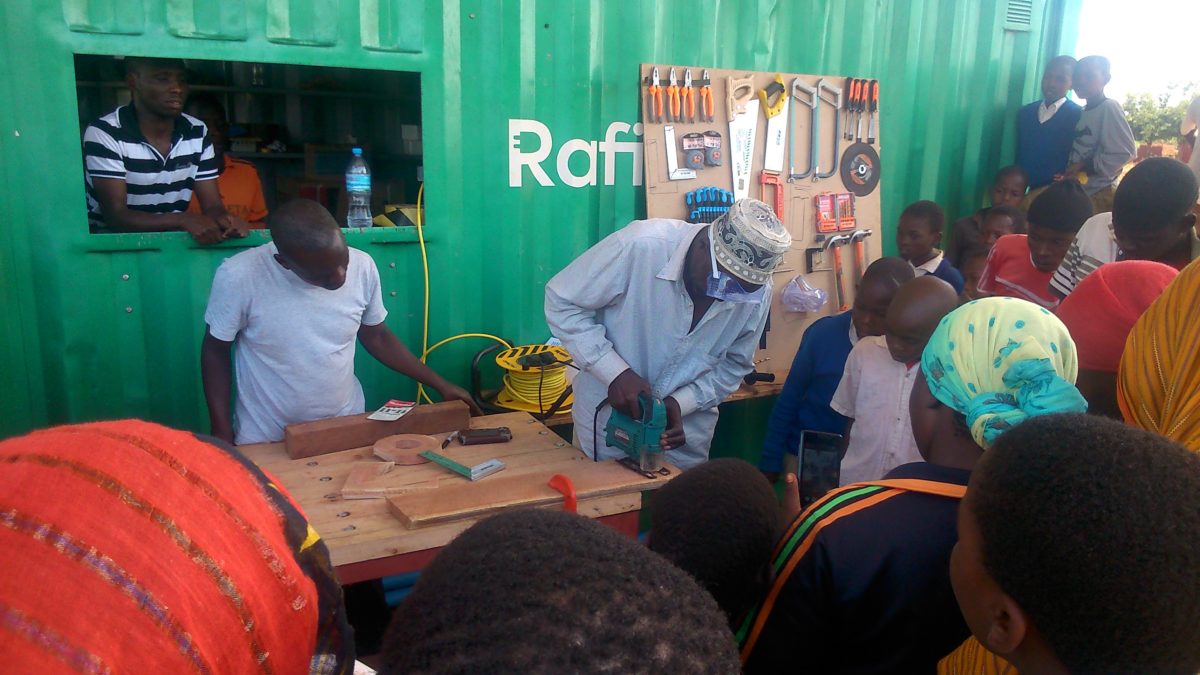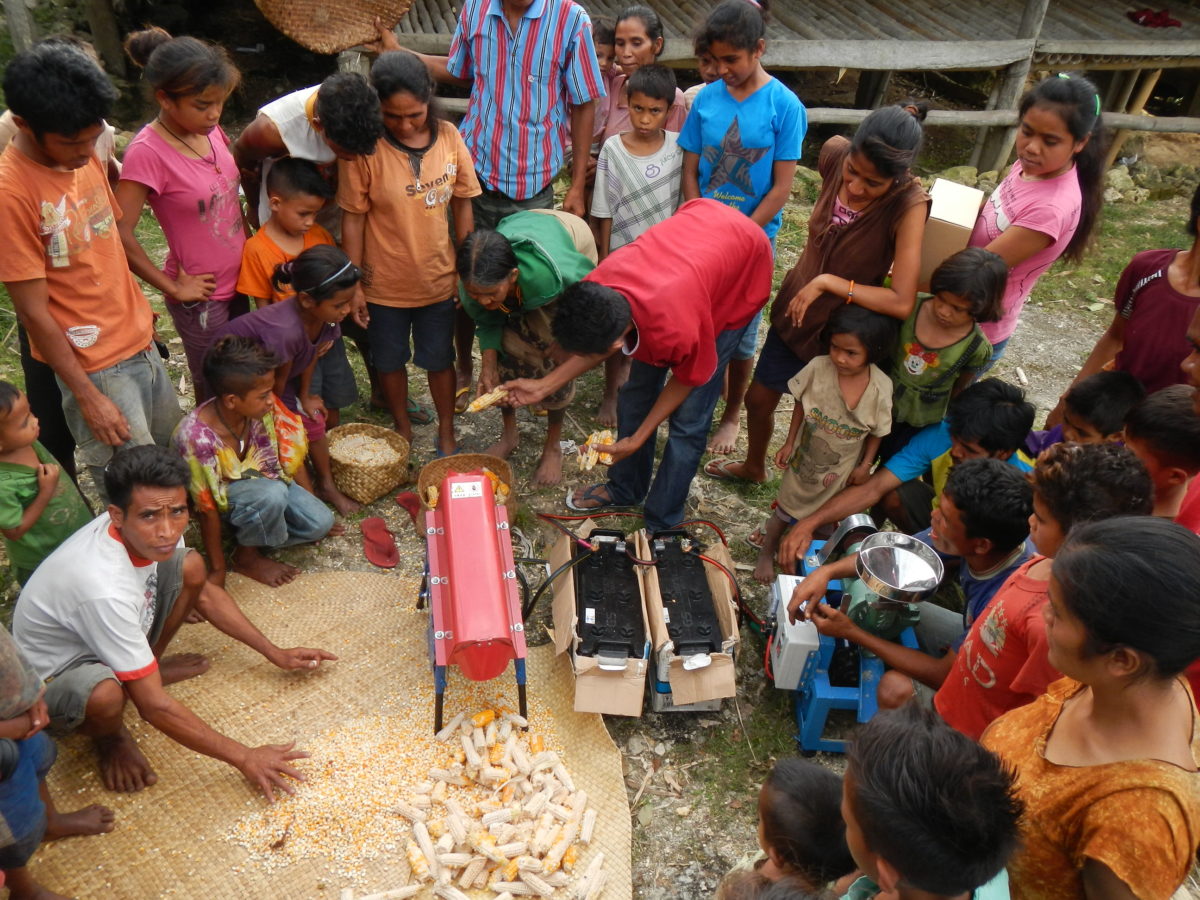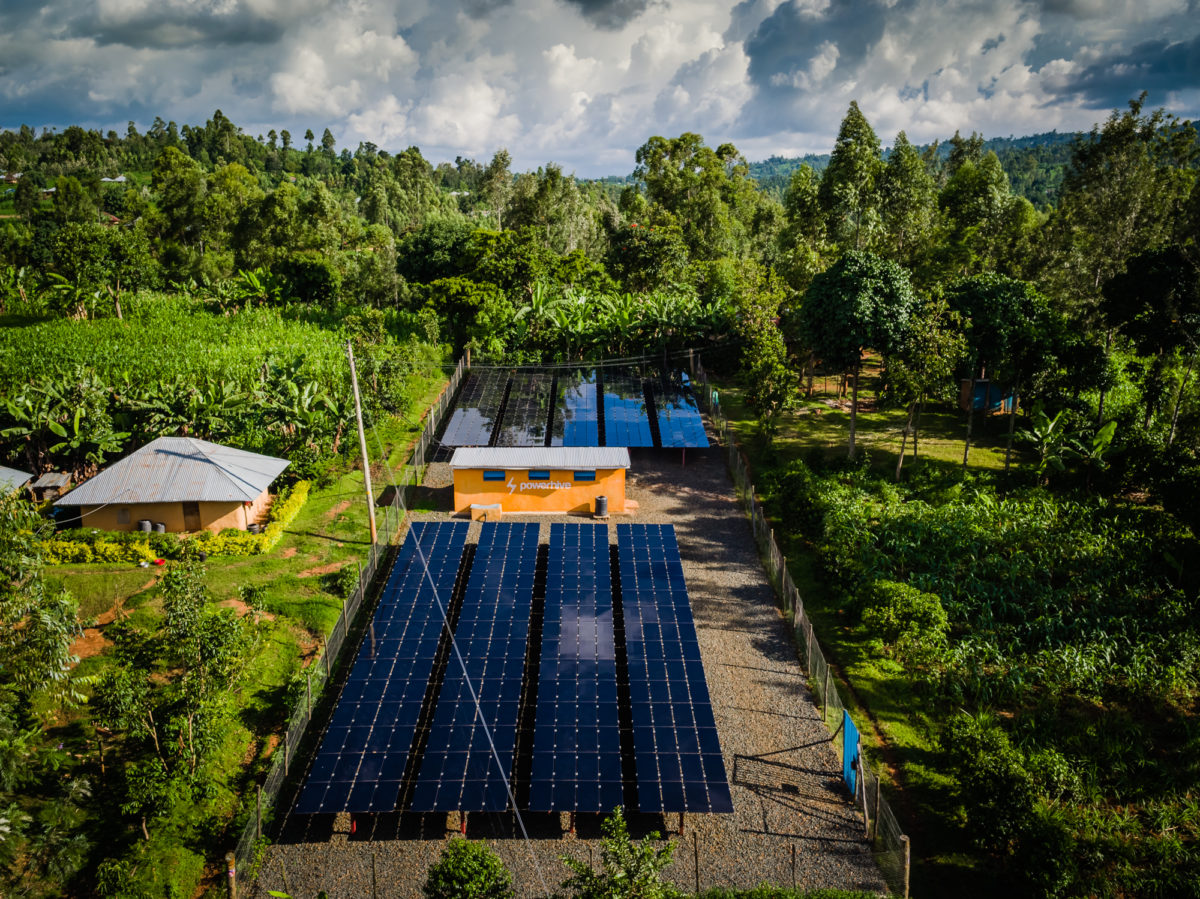A powerful virtuous cycle is created when rural mini-grid developers power equipment that can increase a customer’s income. In an ideal situation, the boost in the customer’s income more than covers the operating cost of the equipment, and the resulting profit allows the customer to afford additional services powered by the mini-grid.
This scenario is more than a rosy-eyed vision. This virtuous cycle is a critical part of the rural mini-grid business model. Benjamin Attia, Solar Analyst at GTM Research who covers energy access markets, explained to pv magazine, “Productive uses of electricity can lower the risk of mini-grid projects by raising revenue, diversifying the loads powered, and boosting overall income in the community which increases repayment.”
However, as Maarten Fonteijn, Business Development Manager of Rafiki Power, a mini-grid company with eight systems in Tanzania, articulated to pv magazine, powering productive-use equipment is not as simple as building the mini-grid and waiting for customers to prosper. “Developing productive uses is one of the main challenges across the sector. Connecting people to the mini-grid and waiting for them to adopt appliances won’t result in a viable business model.”
There can be numerous barriers to the adoption of productive-use equipment. One such challenge is customer's limited ability to pay for the up-front cost of equipment. Emily Moder, COO of SteamaCo, a mini-grid developer turned technology company, relayed SteamaCo's differing experiences operating mini-grids across Kenya. “In the wealthiest villages, there was an existing base of appliance ownership. Electricity from the mini-grid reduced the cost of running appliances by a factor of four, and appliance adoption grew very quickly. On the other hand, in poorer villages, it took several years of saving before customers could purchase appliances.” SteamaCo found that financing appliances allowed poorer customers to grow productive energy demand much faster. Today, a growing number of mini-grid companies offer some form of appliance financing to accelerate demand for electricity.

Microenterprise support
Financing can make appliances and equipment more accessible but financing itself won’t lead to the adoption of equipment. People in rural communities are very risk-averse, and many are hesitant to expand their existing businesses let alone start a new business if the market is unproven. Providing market access for new products or increased production is a critical step for de-risking new business opportunities.
Smart Power India, an organization established by the Rockefeller Foundation that supports the mini-grid industry in India, explained to pv magazine, “The biggest challenge that mini-grid companies face in viably powering productive uses of electricity is the absence of market linkages and efficient rural supply chains. Products produced by the local community also need marketing and branding support to be able to compete in outside markets. Identifying and supporting able rural entrepreneurs and the identification of the right technology are other key challenges.”
To overcome some of these challenges, mini-grid companies are providing business and technical training to microenterprises powered by their mini-grids. In situations where the business challenges are particularly high, some rural mini-grid companies are choosing to take temporary or permanent ownership of the microenterprises.
Vijay Bhaskar, Managing Director for Mlinda, a mini-grid developer operating 13 mini-grids in India, described to pv magazine their approach to fostering microenterprises on their mini-grids, “Mlinda’s involvement varies by the activity. Irrigation pumps are individually owned and require limited technical support. Rice hullers are also owned at a family level but require more business training. Mustard oil expelling, on the other hand, requires larger economies of scale to be viable, so right now, we are doing a large amount of the managerial work in the oil expelling businesses. Across the microenterprises, the villagers do around 10 to 40 percent of the work with Mlinda doing the rest of the work. The goal is to eventually have the enterprises run entirely by the villagers, though right now there is still a need to develop the business model and train villagers in managing the businesses.”
Not all mini-grid companies consider providing microenterprise support a long-term priority. Given the frontier-status of the rural mini-grid market, many mini-grid companies today are providing these support services themselves because few other organizations operate in the villages they serve.
Partnerships
Increasingly, rural mini-grid companies are seeking partnerships with non-governmental organizations and private companies to allow these other organizations to provide the microenterprise support services necessary to promote demand growth.
Fonteijn of Rafiki Power explained, “At this stage, we are still quite strongly involved in supporting the microenterprises on our mini-grids, but over time, we would like to see our partners provide most of these services. We see the development and operation of the mini-grids as our core business. We have had good discussions with organizations in the development space, and they have demonstrated a strong interest in our work. Since we visit our villages frequently and have good connections with village leaders and valuable information on the creditworthiness of our customers, we have a lot to offer potential partners.”
The value that mini-grid companies can provide to other organization was reiterated by Rik Wuts, Co-Founder and Head of Business Development of Powerhive, a technology company turned mini-grid developer in Kenya and Nigeria, “Agricultural trading businesses have expressed a strong interest in partnering with us because the customers they want to reach are already our customers.” Powerhive has partnered with fertilizer companies in pilots to provide productivity-enhancing agricultural inputs like irrigation pumps and fertilizer to their customers.
Attia of GTM Research echoed this sentiment by saying, “Mini-grids can serve as the spearhead of the last-mile development network for many other industries. Mini-grid companies’ presence in these communities gives them an opportunity to become an aggregator and consolidator of the supply chain serving last-mile communities.”
Popular content
Wuts of Powerhive emphasized the value of their relationship with the customer. “By leveraging our existing customer relationship management (CRM) and billing systems, other companies can more easily reach and interact with our customers.” Through these pilots, Powerhive is increasingly focused on providing services to their customers. “One of our greatest assets is our relationship with our customers. We have spent a lot of time building that trust and it enables us to offer a range of services to the communities which in turn provide them with meaningful ways to improve their quality of life.”
Powerhive has even gone so far as considering letting other companies provide the power for their mini-grid. “We have looked into signing power purchase agreements with other companies so that we can focus solely on our customers. You could call this a capital-light model, though, in this model, we would need to be very careful about the partners we select to power our mini-grids.”

Image: Village infrastructure angels
Identifying enterprise opportunities
Even with financing and support services available, there is always a risk that the microenterprises will fail. As Fonteijn of Rafiki Power put it, “It doesn’t do us any good to arrange all of these services if the businesses go bust in a few weeks.”
Identifying microenterprises that can sustainably and consistently generate value is another challenge for fostering productive uses. Eva Lee, Business Development Analyst at Rafiki Power explained to pv magazine, “We have tried to analyze the whole agricultural value chain to identify opportunities for capturing more of the value chain within the local villages.”
Bhaskar of Mlinda described their process for identifying their productive-use enterprises, “Nearly 85% of our mini-grids are in villages that are connected to the government grid, but the grid voltage is too low to power equipment and only provides single-phase power, which means people can’t power equipment from the national grid. We also observed that when the government grid was installed, the distribution lines only ran amongst the houses in the village, but the water sources were around one kilometer from the village. Mlinda built a distribution line to the river to power irrigation pumps and unclogged the government-built pipes that are used to bring water from the river to the fields.”
Wuts of Powerhive divides their productive-use strategy into two categories, “We call the first approach “one-to-many” as the productive uses can be adopted by numerous people in the community. These productive use loads include equipment for breeding chickens, irrigation pumps, and computer tablets with internet connectivity to allow people to complete basic tasks like those on Amazon’s Mechanical Turk. The second approach we call “one-to-one” where only a few appliances can exist in a village given supply chain constraints such as a welder or grain mill.”
Village Infrastructure Angels, a developer of off-grid productive use systems, has collaborated with Project Support Services in Papua New Guinea to develop a range of low-power agricultural equipment from 120 to 1200 watts. These low-power, low-cost machines can make productive-use equipment more attainable for villagers and easier for mini-grid companies to explore and identify new business opportunities.
Social impact
While in the end, most mini-grid companies are fostering productive uses to demonstrate a viable business model, there is a clear “win-win” quality to the virtuous cycle of productive uses. Through access to productivity-enhancing equipment, villagers can increase and diversify their income, reduce transportation and processing costs, and have more time in the day to devote to other livelihood or leisure activities.
The impact of productive uses can be sometimes hard to imagine. UNICEF, the United Nation’s children organization, estimates that globally women and girls spend 200 million hours (or 22,800 years) each day collecting water. Stewart Craine, Managing Director of Village Infrastructure Angels, described their work with drinking water pumps, “In Vanuatu, we found that water pumps focused primarily on irrigation, but most people wanted pumps for drinking water. There was a hole in the market for low-volume, low-cost pumps, so we found a supplier for such a pump and started deploying pumps for drinking water. Now in the dry season, women don’t have to spend entire days out of their week retrieving water.”
Rafiki Power has also had success with their first drinking water pilot. They reported a doubling of the amount of clean drinking water available to the village after drilling a 180 meter-deep well.
Bhaskar of Mlinda articulated a higher-level description of the effects of their work in rural villages, “As more and more villagers migrate to cities and industrial areas in search of work, we are one of the few forces working against this urbanizing trend by bringing economic opportunities back to rural villages. Capturing more of the value chain in villages provides long-term secure social security and opportunities for people to stay in the places they grew up. This change won’t happen overnight, but we believe in the power of our work and the potential of the people we serve.”
By: Dustin Zubke
This content is protected by copyright and may not be reused. If you want to cooperate with us and would like to reuse some of our content, please contact: editors@pv-magazine.com.


Very good article